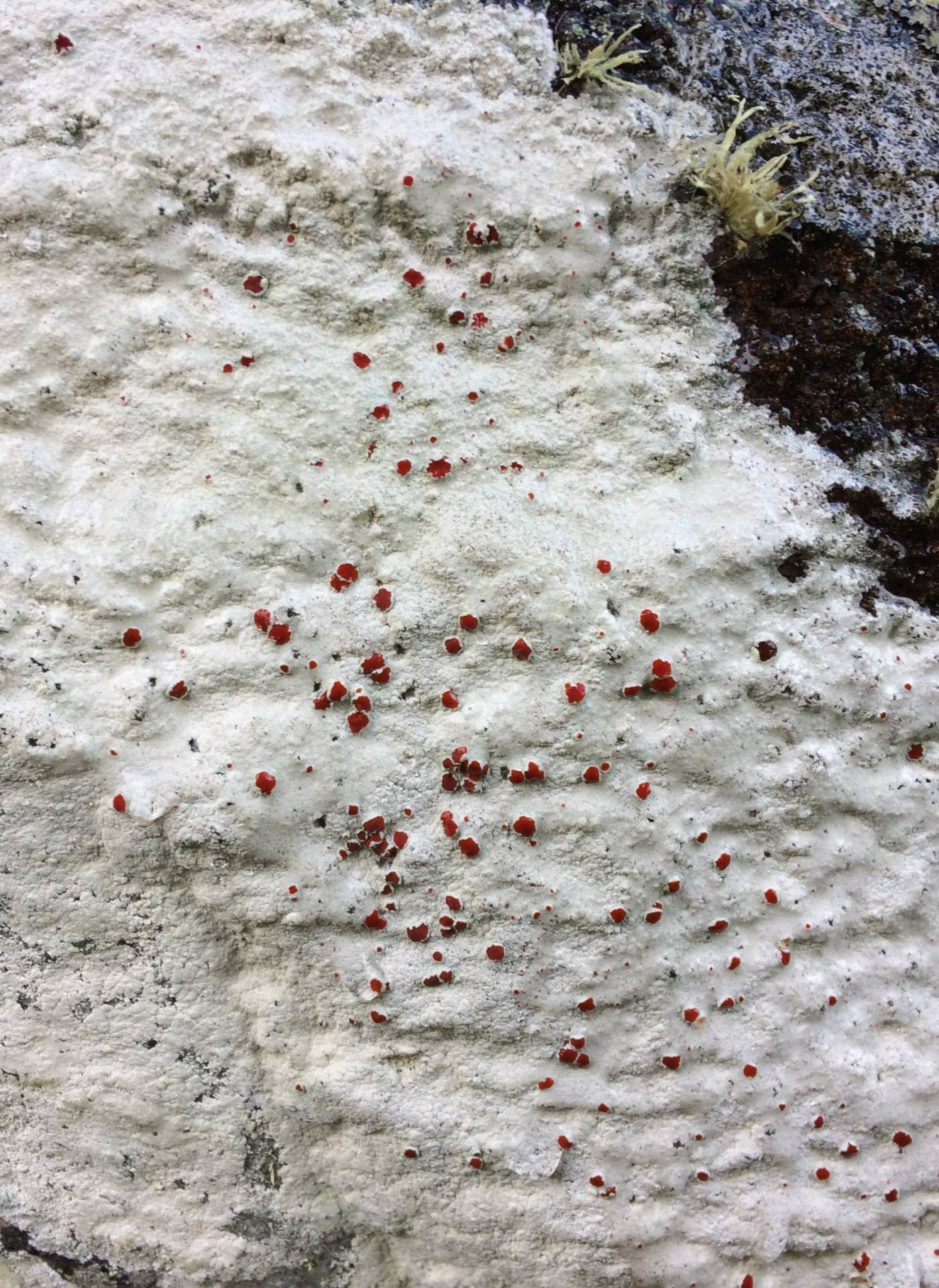In the fertile stage, Haematomma ochroleucum is a relatively conspicuous crustose lichen thanks to the bloody-red fruiting bodies. However, it usually occurs in a sterile stage. It has a characteristic sorediate thallus with an arachnoid margin. The species grows in shaded habitats with humid microclimate, such as perpendicular to overhanging, acidic to slightly calcareous rocks in river valleys and sandstone areas. Much rarely, it occurs as an epiphyte.
It is one of the suboceanic lichens common mainly in western Europe. In the Czech Republic, the species is rather rare and local. Actual records are sparse. In the past, the lichen used to be reported much more frequently (see The Catalogue by Vězda & Liška 1999), and also in the fertile stage as is evident from some detailed descriptions (Suza 1921, Bayer 1922). All the findings come from saxicolous substrates, therefore it is unlikely that they were mistaken for other species. For example in Poland (Kukwa 2005), this name was often used for the epiphytic and similar species Lecanora thysanophora.
Literature: Suza J. (1921): Čtvrtý příspěvek k lichenologii Moravy. – Sborník Klubu přírodovědeckého 3: 1–50. Bayer E. (1922): O některých zajímavých nálezech lišejníků v Čechách. – Věda přírodní 3: 51–54. Kukwa M. (2005): Lecanora thysanophora (Lecanoraceae, zlichenizowane Ascomycota) w Polsce. – Fragmenta Floristica et Geobotanica Polonica 13: 385–391.
taxonomic classification:Ascomycota → Lecanoromycetes → Lecanorales → Haematommataceae → Haematomma
Red List (Liška & Palice 2010):VU – vulnerable
Red List (Malíček 2023):C2 – strongly endangered
Occurrence in the Czech Republic
All records: 26, confirmed 7. One click on a selected square displays particular record(s), including their source(s).
